Fiber Link Health Detection and Self-Healing Algorithm for Two-Ring-Based RoF Transport Systems
Abstract
:1. Introduction
2. Materials and Methods
3. Two-Step Fiber Link Failure Detection and Self-Healing Algorithm
3.1. First Detection Step of the Proposed Algorithm
3.2. Second Detection Step of the Proposed Algorithm
4. Conclusions
Author Contributions
Funding
Conflicts of Interest
References
- Singh, S. Performance investigation on DWDM optical ring network to increase the capacity with acceptable performance. Optik 2014, 125, 5750–5752. [Google Scholar] [CrossRef]
- Olmedo, M.I.; Suhr, L.; Prince, K.; Rodes, R.; Mikkelsen, C.; Hviid, E.; Monroy, I.T. Gigabit access passive optical network using wavelength division multiplexing—GigaWaM. J. Lightwave Technol. 2014, 32, 4285–4293. [Google Scholar] [CrossRef]
- Yang, B.; Chen, X.; Shen, C.; Huang, X.; Ma, Z.; Bei, J.; Li, M.; Zhu, Q.; Na, T. Smile OAN: A long reach hybrid WDM/TDM passive optical network for next generation optical access. In Proceedings of the Asia Communications and Photonics Conference, Wuhan, China, 2–5 November 2016. [Google Scholar]
- Feng, C.; Gan, C.; Gao, Z.; Wu, C. Novel WDM access network featuring self-healing capability and flexible extensibility. In Proceedings of the International Conference on Electrical, Computer Engineering and Electronics, Jinan, China, 29–31 May 2015. [Google Scholar]
- Feng, K.M.; Wu, C.Y.; Yan, J.H.; Lin, C.Y.; Peng, P.C. Fiber Bragg grating-based three-dimensional multipoint ring-mesh sensing system with robust self-healing function. IEEE J. Sel. Top. Quantum Electron. 2012, 18, 1613–1621. [Google Scholar] [CrossRef]
- Imtiaz, W.A.; Waqas, M.; Mehar, P.; Khan, Y. Self-healing hybrid protection architecture for passive optical networks. Int. J. Adv. Comput. Sci. Appl. 2015, 6, 144–148. [Google Scholar]
- Pires, J.J.O. Constraints on the design of 2-fiber bi-directional WDM rings with optical multiplexer section protection. In Proceedings of the Digest of LEOS Summer Topical Meetings: Advanced Semiconductor Lasers and Applications, Copper Mountain, CO, USA, 30 July–1 August 2001. [Google Scholar]
- Akhtar, A.; Turukhin, A.V.; Parsons, E.; Bakhshi, B.; Cardoso, J.; Vejas, M.; Savidis, H.; Derr, N.; Kovsh, D.; Golovchenko, E.A. First field demonstration of fault resilience in a regional undersea OADM network. In Proceedings of the OFC/NFOEC, Los Angeles, CA, USA, 4–8 March 2012. [Google Scholar]
- Matsuura, M.; Oki, E. Optical carrier regeneration for wavelength reusable multicarrier distributed OADM network. In Proceedings of the Conference on Lasers and Electro-Optics, San Jose, CA, USA, 16–21 May 2010. [Google Scholar]
- Sun, X.; Chan, C.K.; Wang, Z.; Lin, C.; Chen, L.K. A single-fiber bi-directional WDM self-healing ring network with bi-directional OADM for metro-access applications. IEEE J. Sel. Areas Commun. 2007, 25, 18–24. [Google Scholar] [CrossRef]
- Park, S.B.; Lee, C.H.; Kang, S.G.; Lee, S.B. Bidirectional WDM self-healing ring network for hub/remote nodes. IEEE Photonics Technol. Lett. 2003, 15, 1657–1659. [Google Scholar] [CrossRef]
- Rashed, A.N.Z. Transmission performance evaluation of optical add drop multiplexers (OADMs) in optical telecommunication ring networks. Am. J. Eng. Technol. Res. 2011, 11, 23–37. [Google Scholar]
- Chang, C.H.; Lu, D.Y.; Lin, W.H. All-passive optical fiber sensor network with self-healing functionality. IEEE Photonics J. 2018, 10, 1–10. [Google Scholar] [CrossRef]
- Zhao, L.; Huang, X.; Jia, J.; Zhu, Y.; Cao, W. Detection of broken strands of transmission line conductors using fiber Bragg grating Sensors. Sensors 2018, 18, 2397. [Google Scholar] [CrossRef]
- Pham, T.; Bui, H.; Le, H.; Pham, V. Characteristics of the fiber laser sensor system based on etched-Bragg grating sensing probe for determination of the low nitrate concentration in water. Sensors 2017, 17, 7. [Google Scholar] [CrossRef]
- Chen, D.; Huo, L.; Li, H.; Song, G. A fiber bragg grating (FBG)-enabled smart washer for bolt pre-load measurement: Design, analysis, calibration, and experimental validation. Sensors 2018, 18, 2586. [Google Scholar] [CrossRef] [PubMed]
- Posada-Roman, J.; Garcia-Souto, J.; Poiana, D.; Acedo, P. Fast interrogation of fiber Bragg gratings with electro-optical dual optical frequency combs. Sensors 2016, 16, 2007. [Google Scholar] [CrossRef] [PubMed]
- Li, W.; Xu, C.; Ho, S.; Wang, B.; Song, G. Monitoring concrete deterioration due to reinforcement corrosion by integrating acoustic emission and FBG strain measurements. Sensors 2017, 17, 657. [Google Scholar] [CrossRef] [PubMed]
- Sun, L.; Li, C.; Li, J.; Zhang, C.; Ding, X. Strain transfer analysis of a clamped fiber Bragg grating sensor. Appl. Sci. 2017, 7, 188. [Google Scholar] [CrossRef]
- Peng, P.C.; Wang, J.B.; Huang, K.Y. Reliable fiber sensor system with star-ring-bus architecture. Sensors 2010, 10, 4194–4205. [Google Scholar] [CrossRef] [PubMed]
- Zhaoxin, W.; Lin, C.; Chun-Kit, C. Demonstration of a single-fiber self-healing CWDM metro access ring network with unidirectional OADM. IEEE Photonics Technol. Lett. 2006, 18, 163–165. [Google Scholar] [CrossRef]
- Zhu, M.; Zhang, J.; Sun, X. Centrally Controlled self-healing wavelength division multiplexing passive optical network based on optical carrier suppression technique. Opt. Eng. 2015, 54, 126105. [Google Scholar] [CrossRef]
- Imtiaz, W.A.; Khan, Y.; Mahmood, K. Design and analysis of self-healing dual-ring spectral amplitude coding optical code division multiple access system. Arab. J. Sci. Eng. 2015, 41, 3441–3449. [Google Scholar] [CrossRef]
- Peng, P.C.; Huang, K.Y. Fiber Bragg grating sensor system with two-level ring architecture. IEEE Sens. J. 2009, 9, 309–313. [Google Scholar] [CrossRef]
- Gu, H.W.; Chang, C.H.; Chen, Y.C.; Peng, P.C.; Kuo, S.T.; Lu, H.H.; Li, C.Y.; Yang, S.S.; Jhang, J.J. Hexagonal mesh architecture for large-area multipoint fiber sensor system. IEEE Photonics Technol. Lett. 2014, 26, 1878–1881. [Google Scholar] [CrossRef]
- Ogushi, I.; Araki, N.; Azuma, Y. A new optical fiber line testing function for service construction work that checks for optical filters below an optical splitter in a PON. J. Lightwave Technol. 2009, 27, 5385–5393. [Google Scholar] [CrossRef]
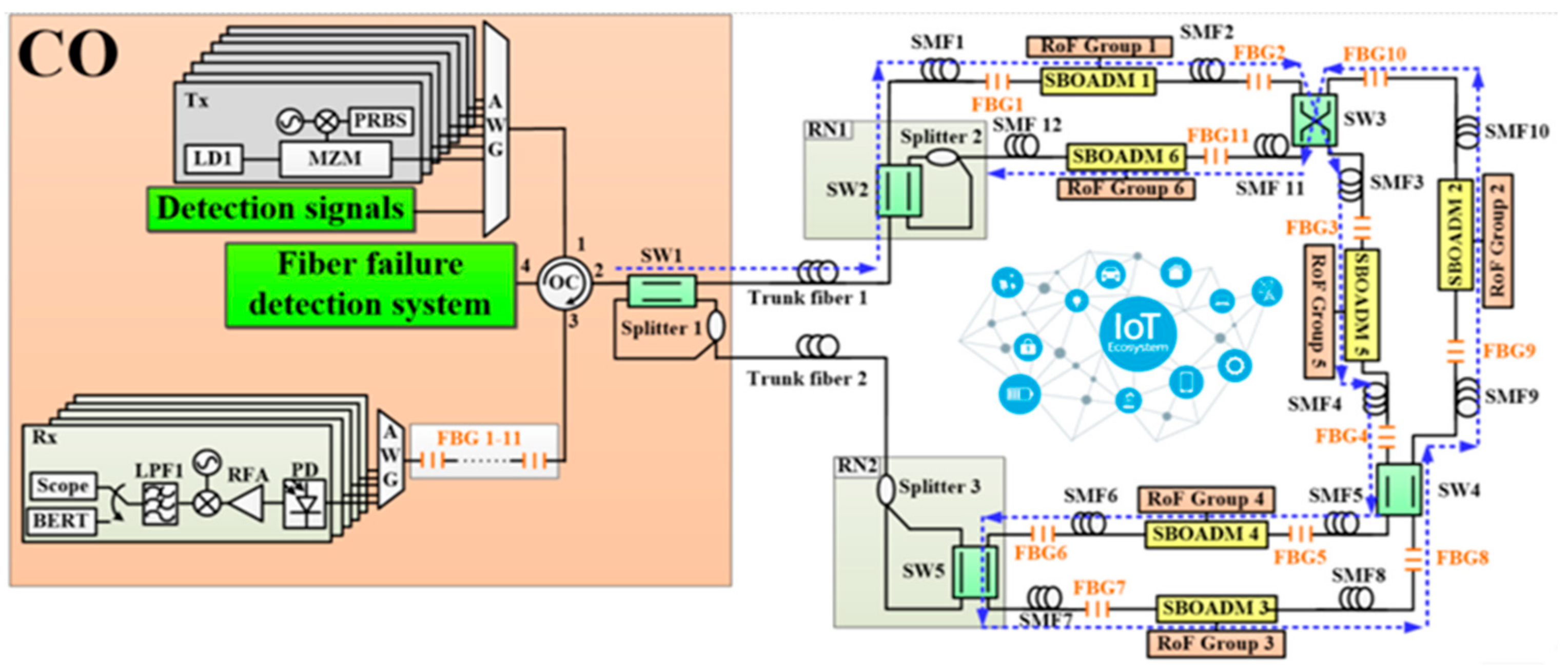
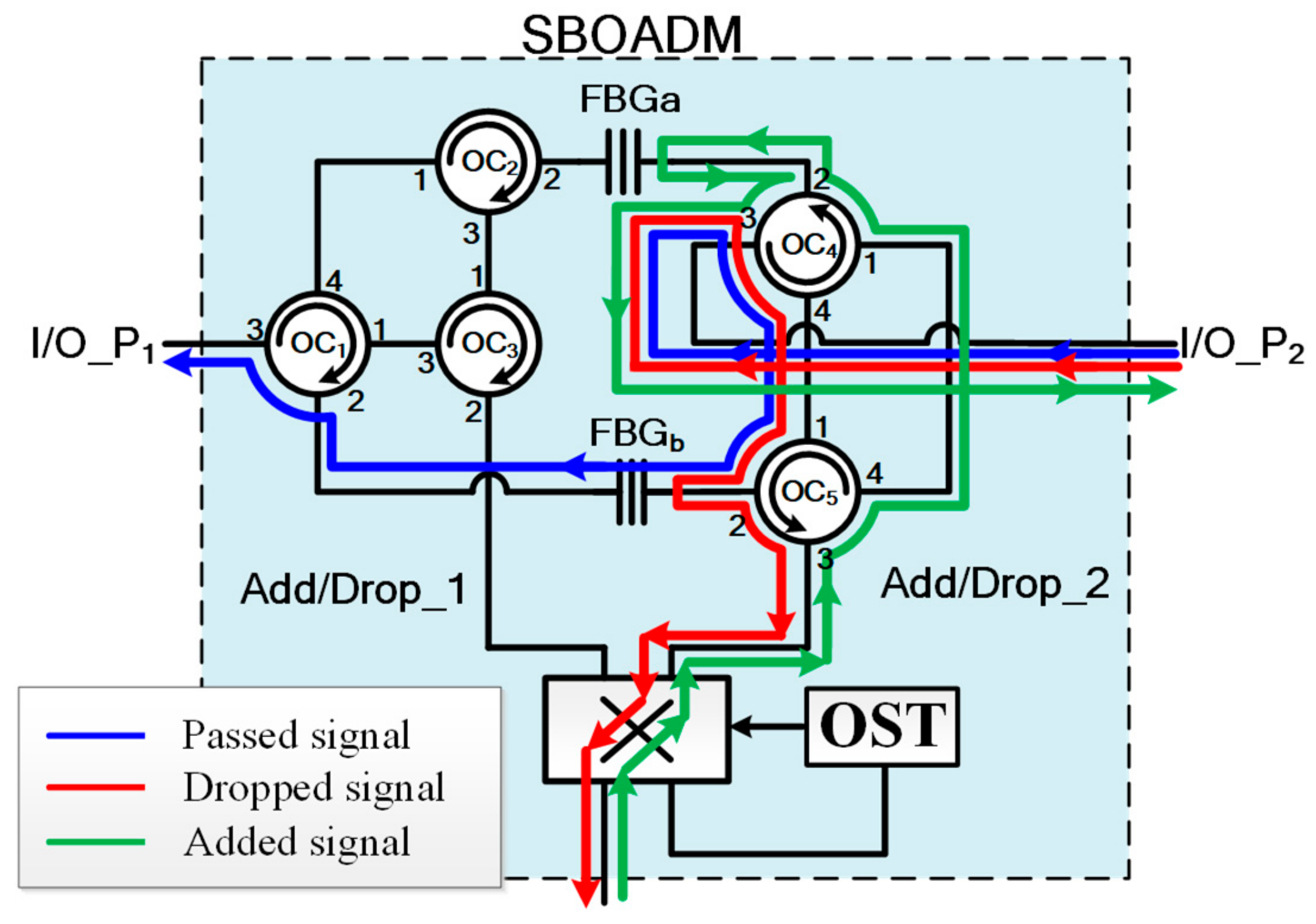
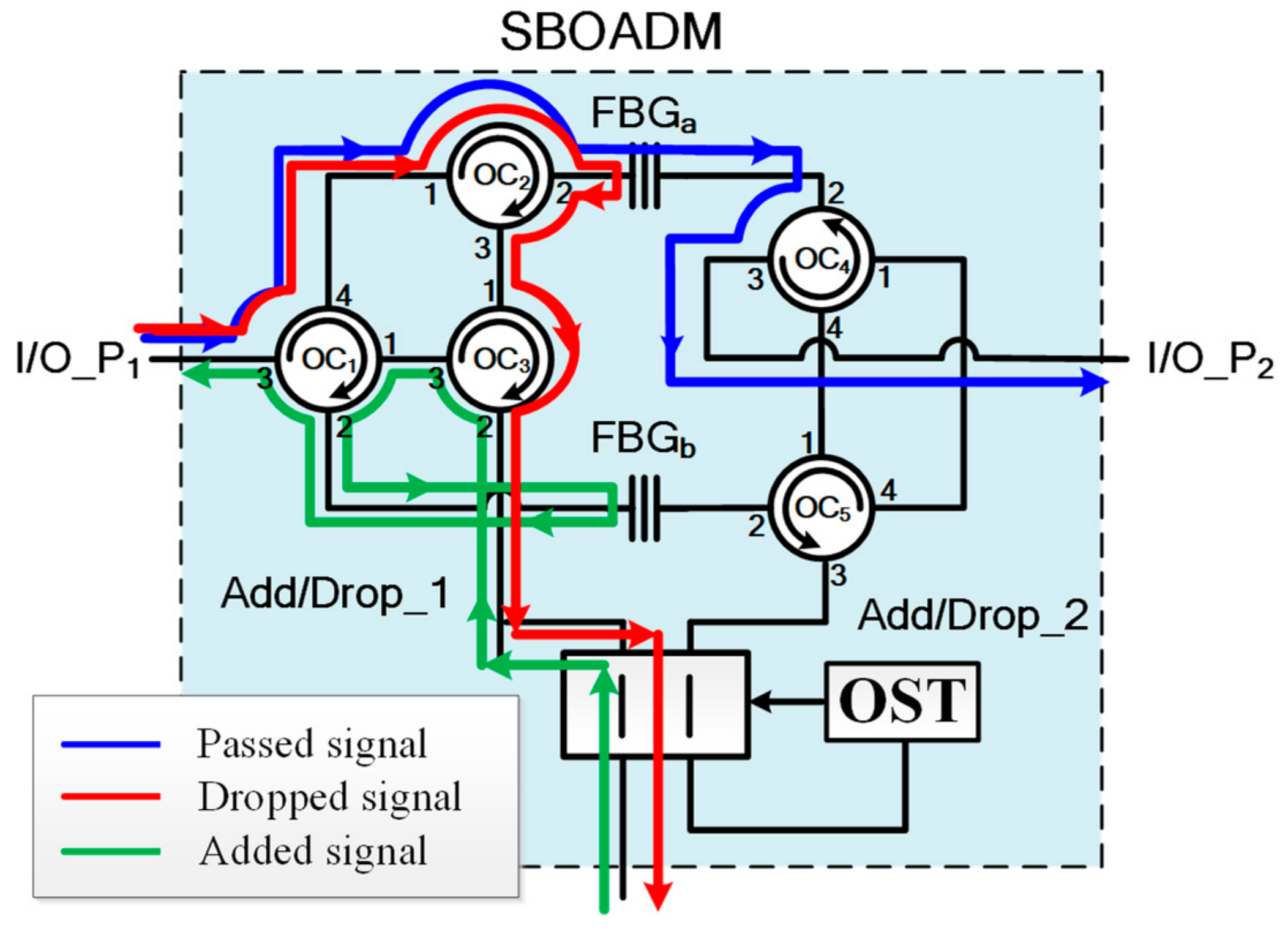
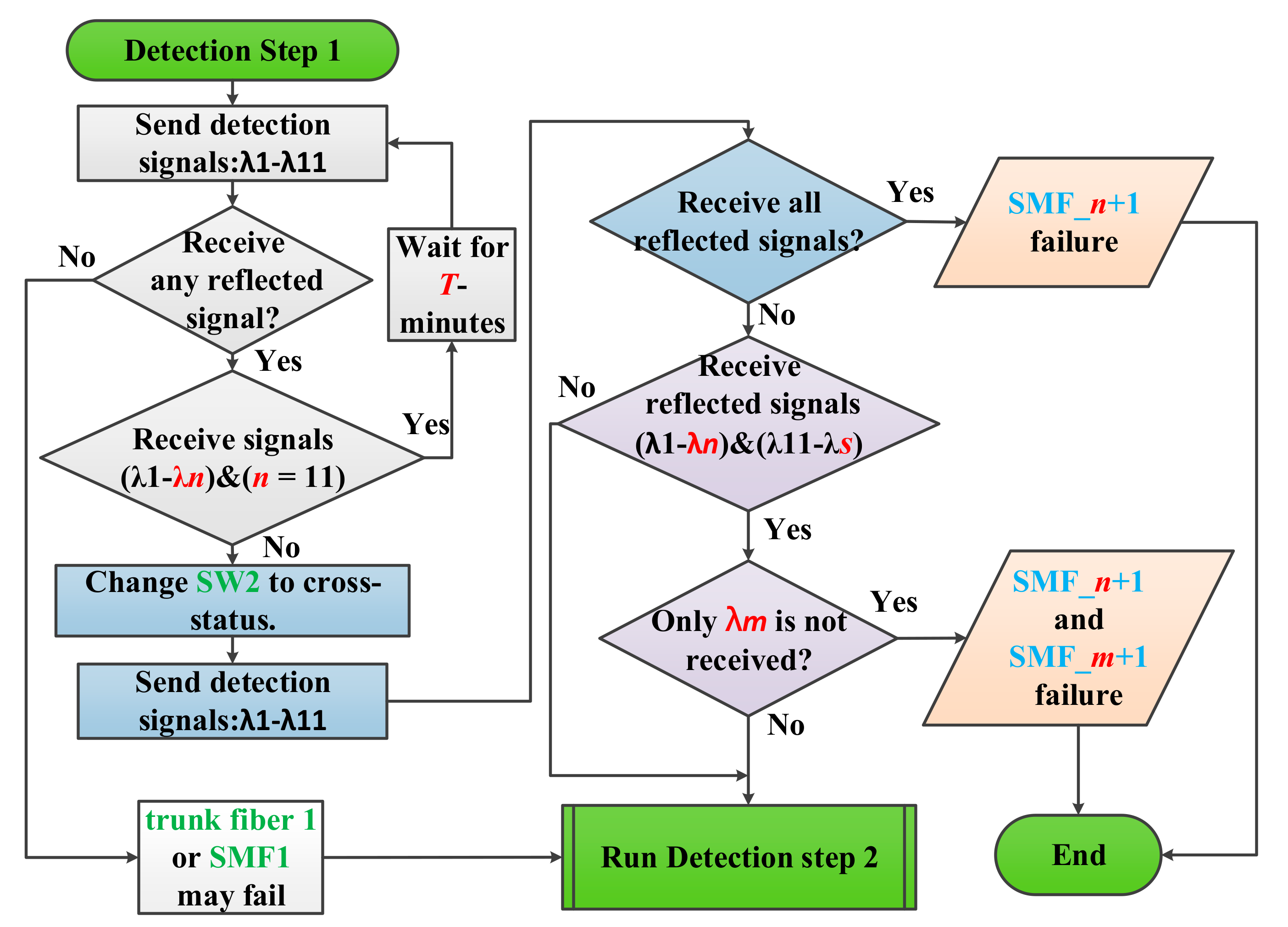


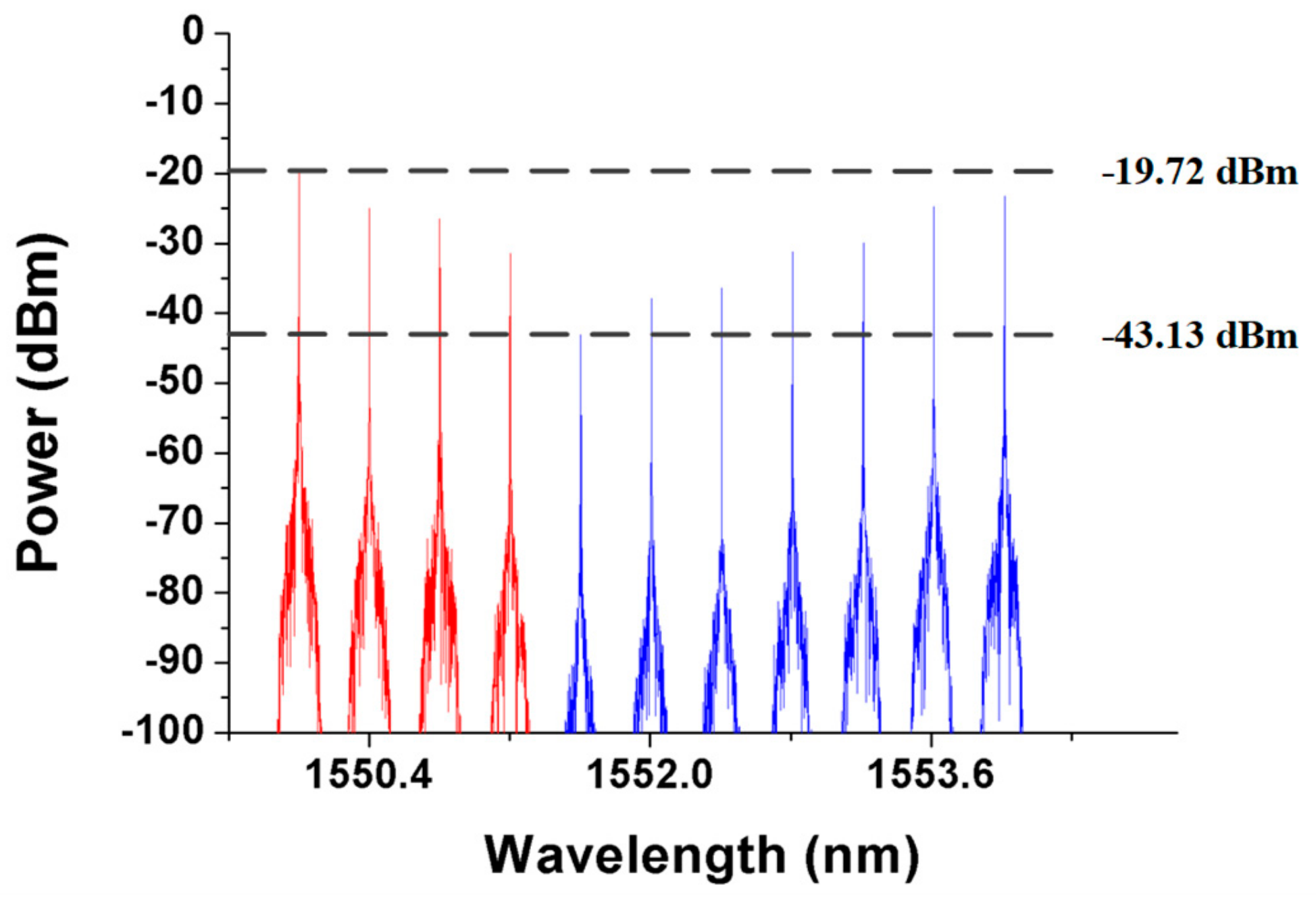

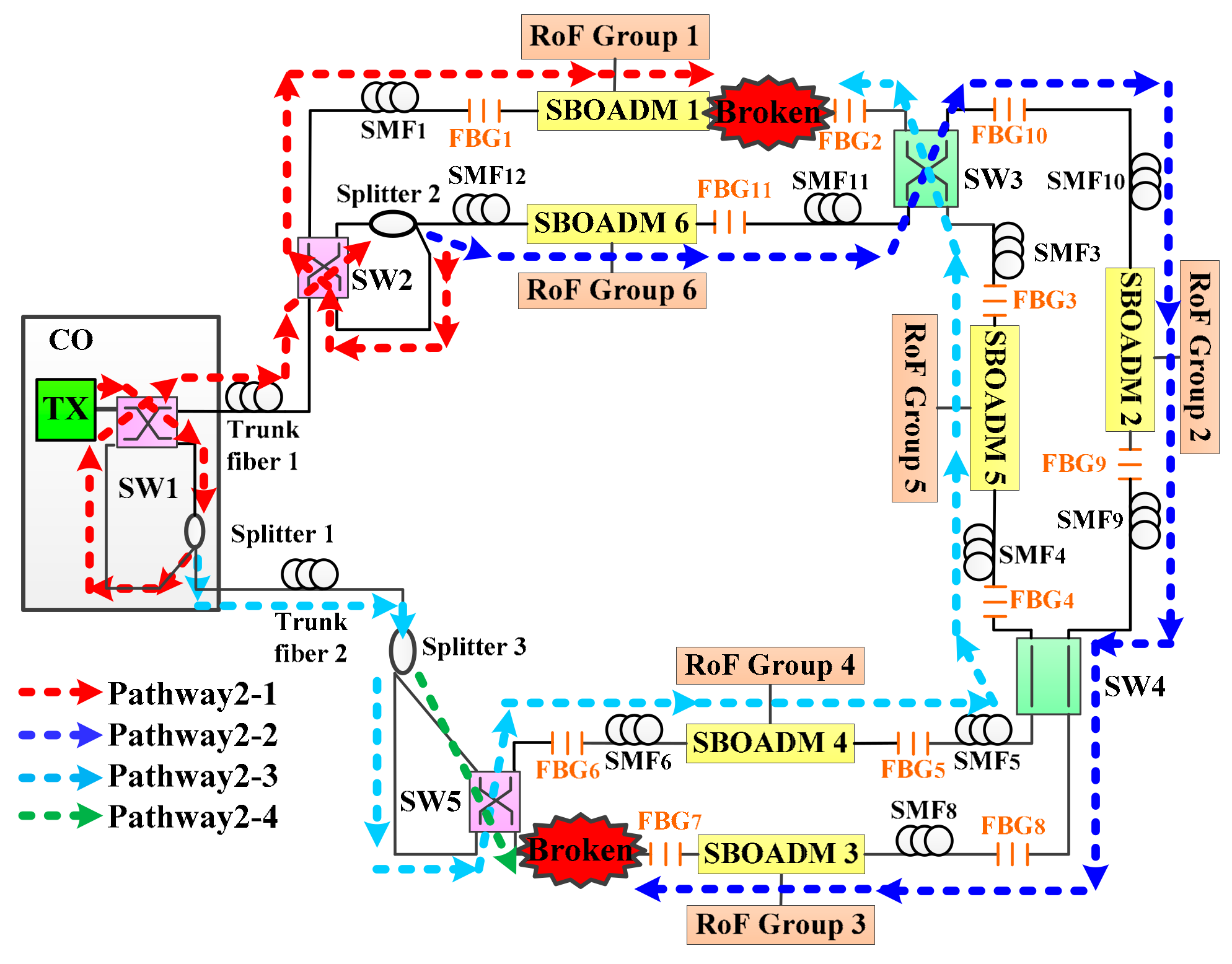
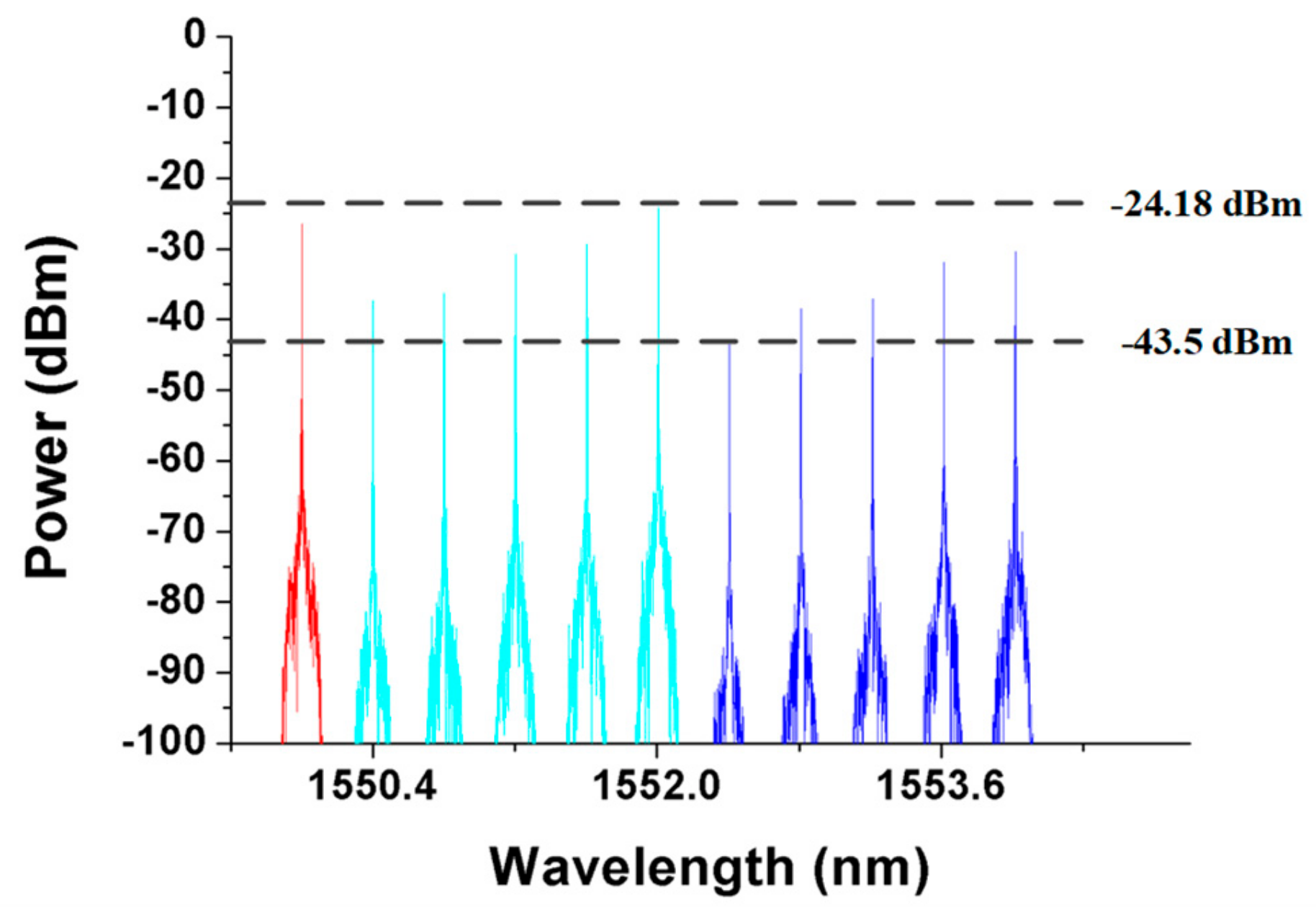
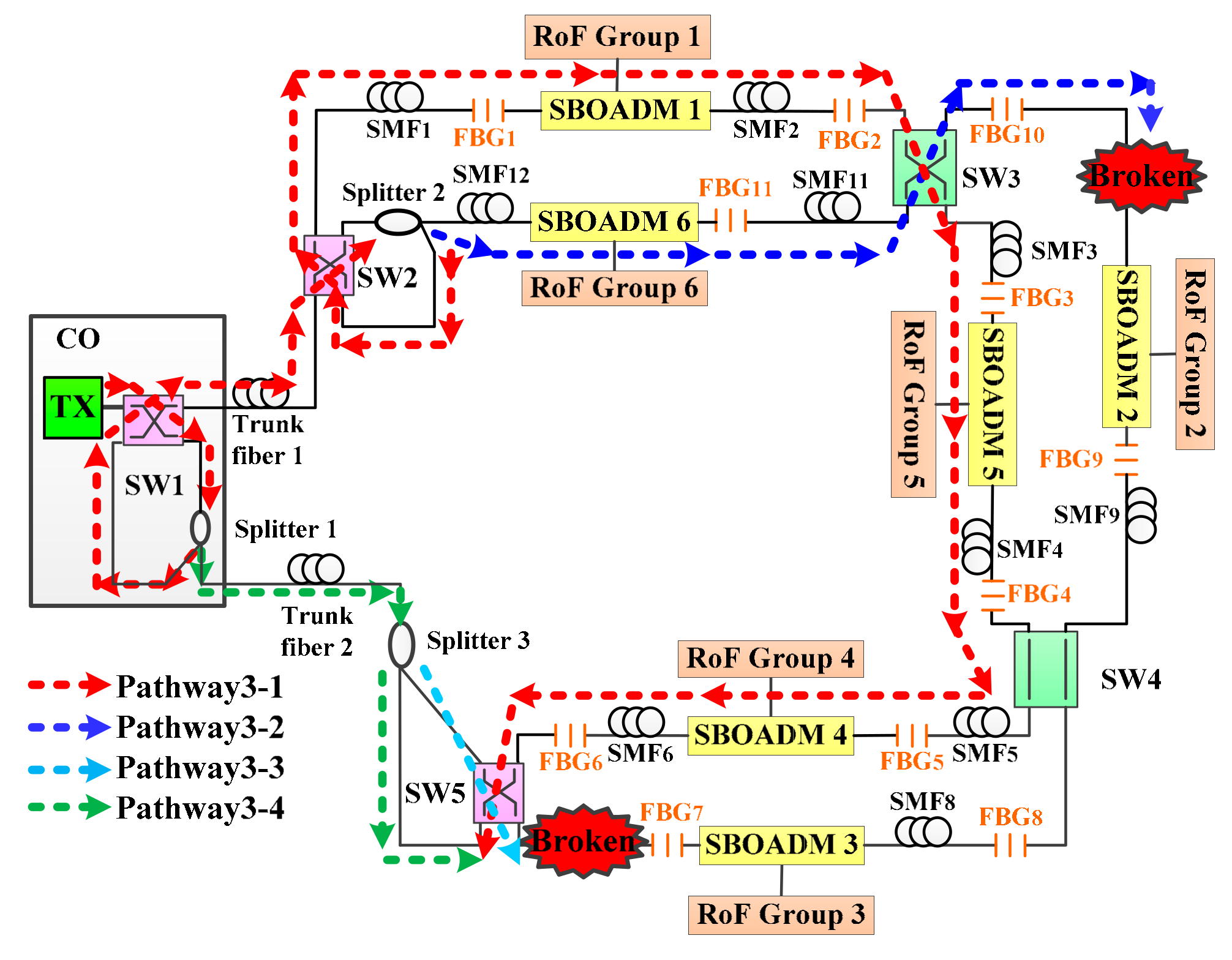
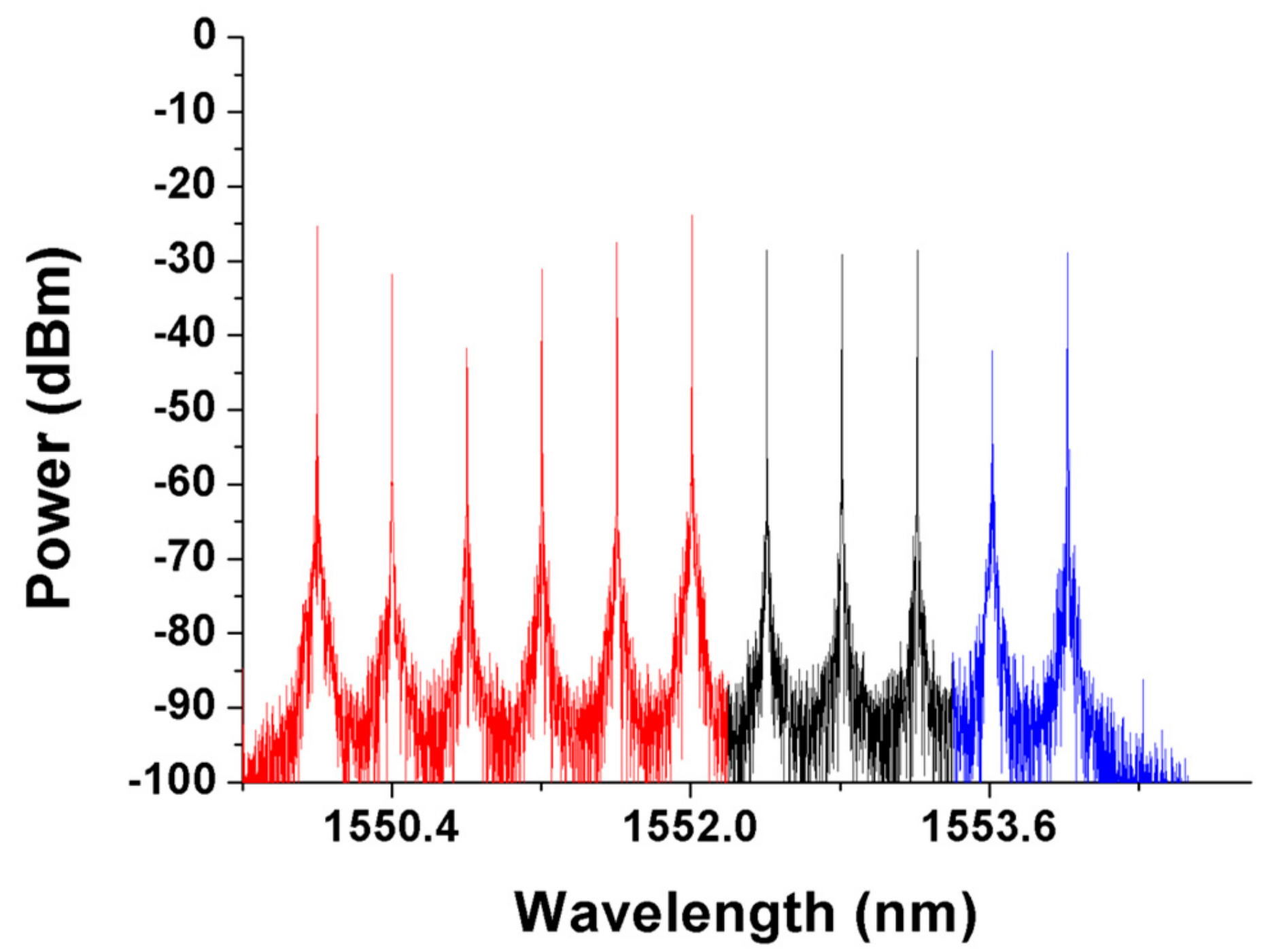
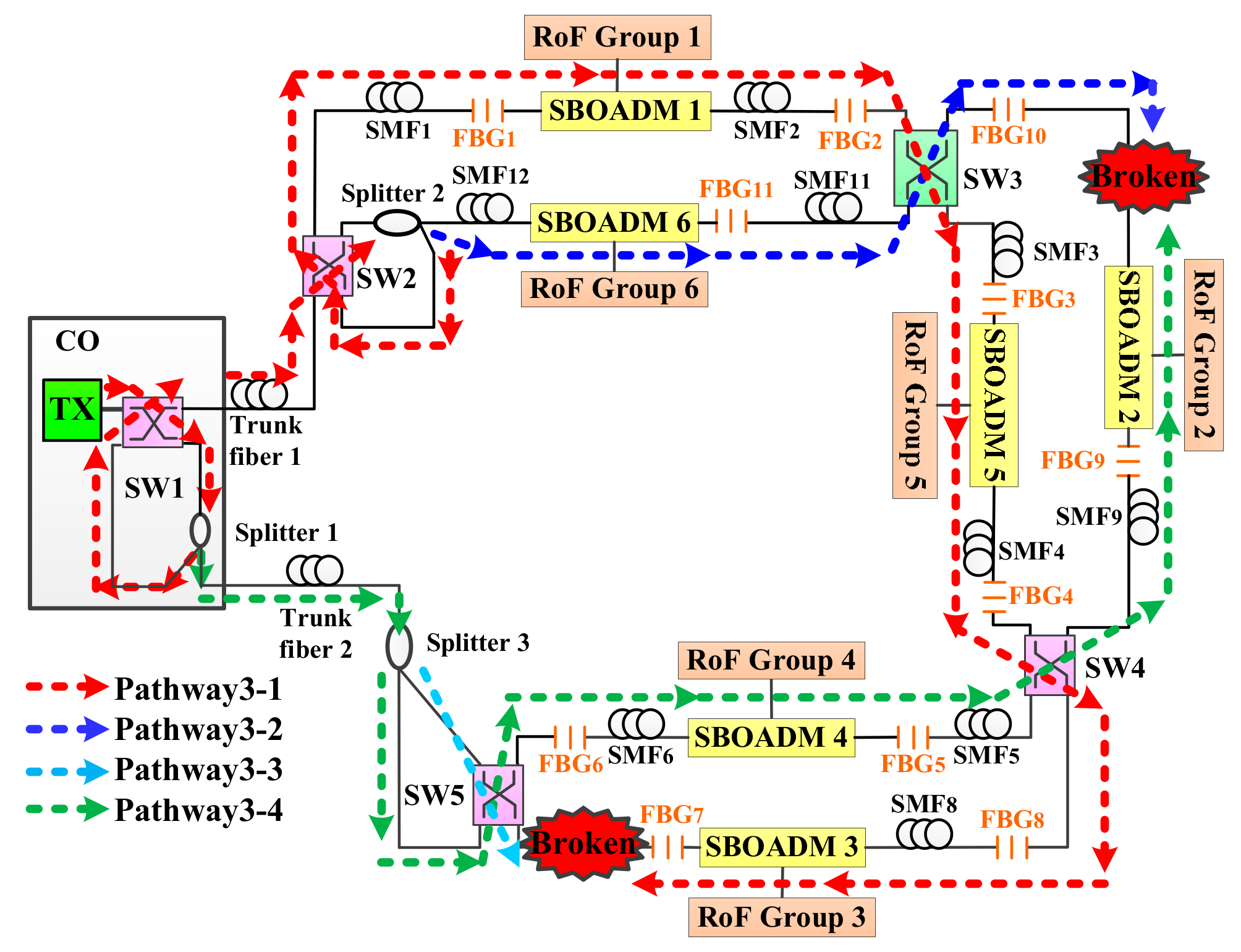

© 2019 by the authors. Licensee MDPI, Basel, Switzerland. This article is an open access article distributed under the terms and conditions of the Creative Commons Attribution (CC BY) license (http://creativecommons.org/licenses/by/4.0/).
Share and Cite
Tsai, W.-S.; Chang, C.-H.; Lin, Z.-G.; Lu, D.-Y.; Yang, T.-Y. Fiber Link Health Detection and Self-Healing Algorithm for Two-Ring-Based RoF Transport Systems. Sensors 2019, 19, 4201. https://doi.org/10.3390/s19194201
Tsai W-S, Chang C-H, Lin Z-G, Lu D-Y, Yang T-Y. Fiber Link Health Detection and Self-Healing Algorithm for Two-Ring-Based RoF Transport Systems. Sensors. 2019; 19(19):4201. https://doi.org/10.3390/s19194201
Chicago/Turabian StyleTsai, Wen-Shing, Ching-Hung Chang, Zhin-Guei Lin, Dong-Yi Lu, and Tsung-Ying Yang. 2019. "Fiber Link Health Detection and Self-Healing Algorithm for Two-Ring-Based RoF Transport Systems" Sensors 19, no. 19: 4201. https://doi.org/10.3390/s19194201
APA StyleTsai, W.-S., Chang, C.-H., Lin, Z.-G., Lu, D.-Y., & Yang, T.-Y. (2019). Fiber Link Health Detection and Self-Healing Algorithm for Two-Ring-Based RoF Transport Systems. Sensors, 19(19), 4201. https://doi.org/10.3390/s19194201




